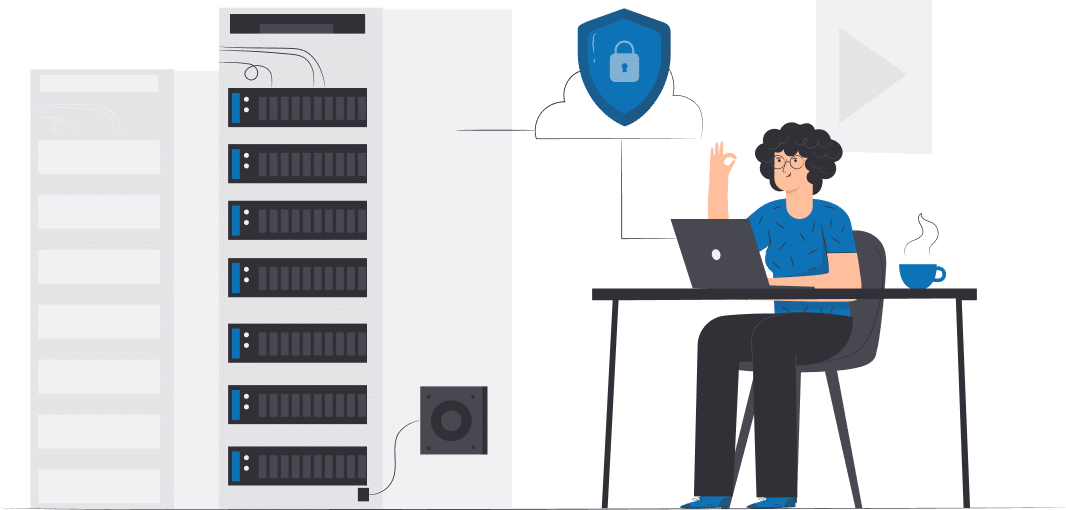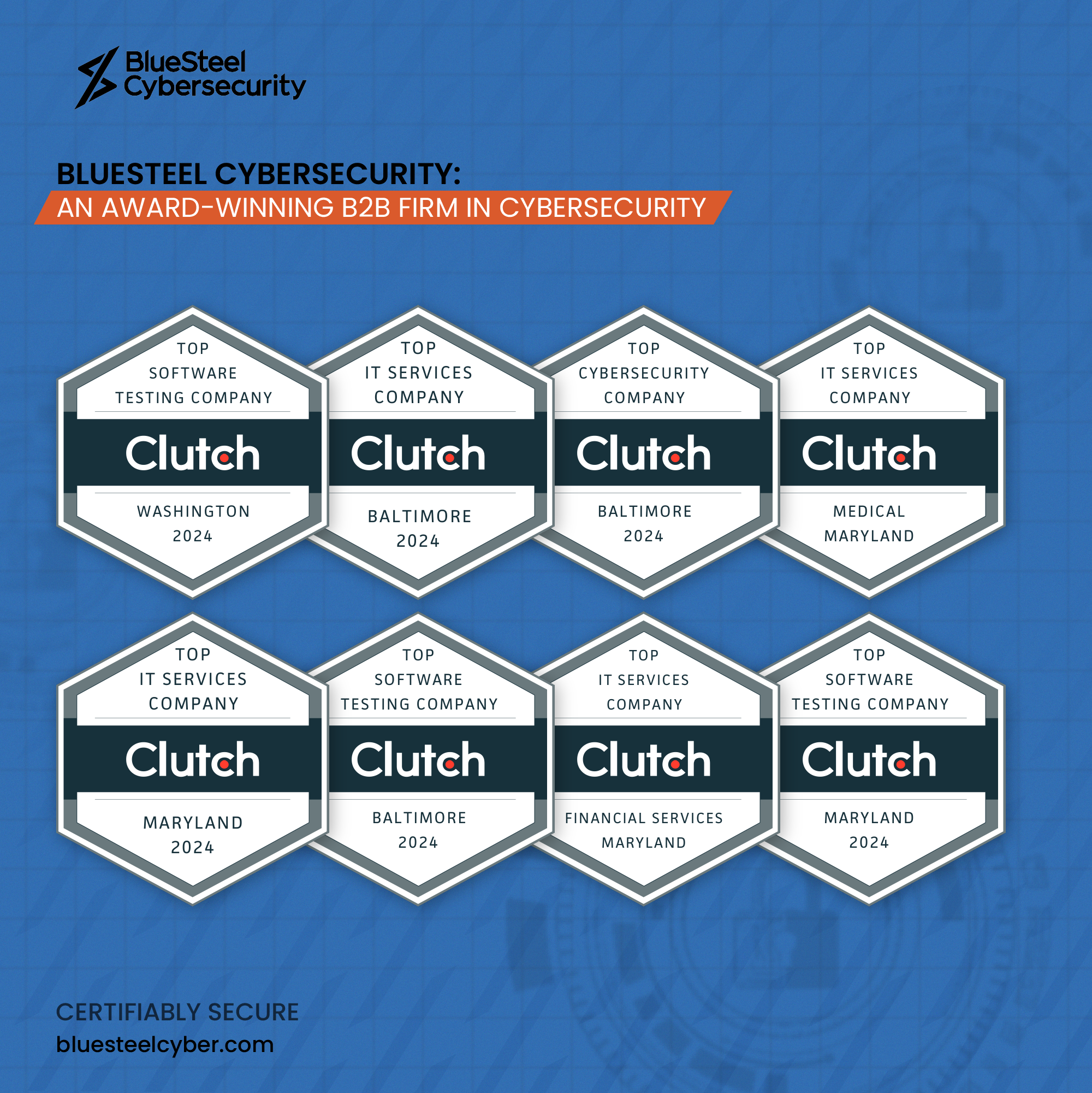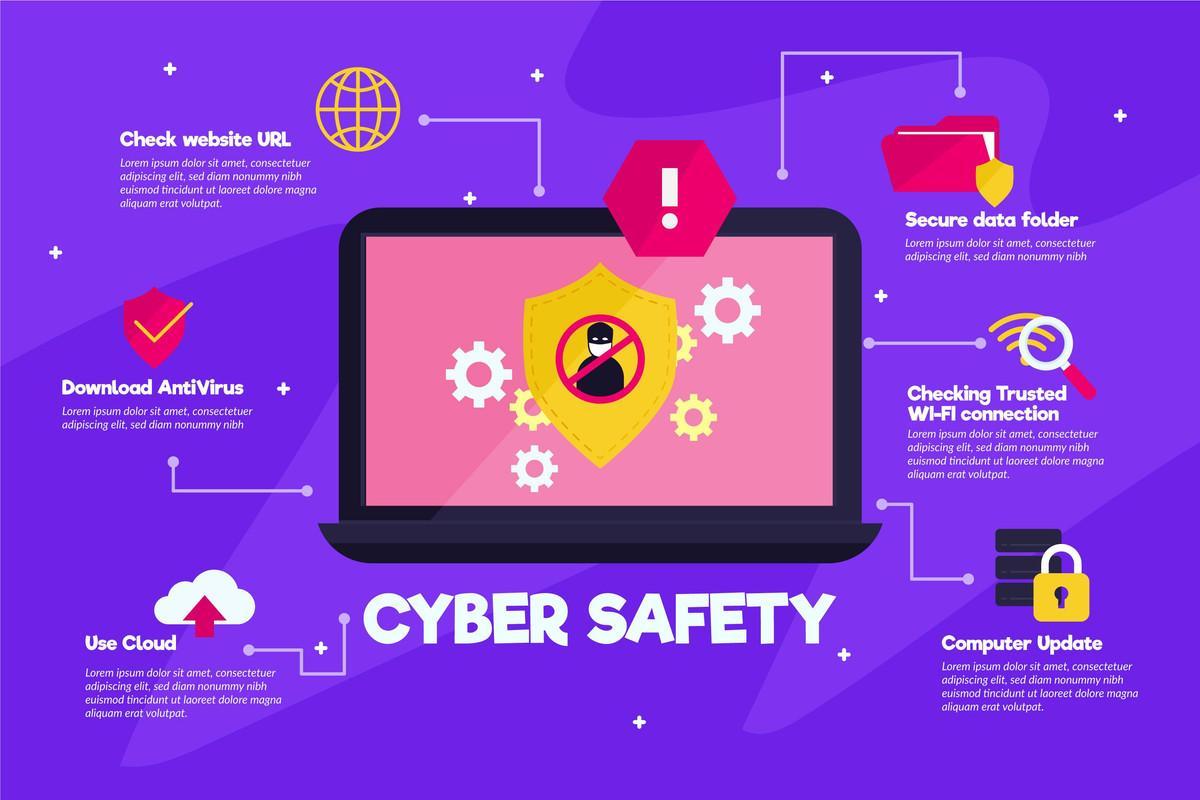Ever feel like you can’t go a day without hearing about some new cybersecurity threat, cyberattack or data breach? From the latest ransomware extorting hospitals to state-sponsored espionage, stories of hacking and digital security incidents seem impossible to avoid.
As our reliance on technology grows, so does our vulnerability. Just think about how much of your life now depends on the internet – shopping, banking, communication, entertainment, and more. Hackers are getting more sophisticated by the day and so we must, as a collective, need to be informed and get savvy about cybersecurity.
Cyberattacks come in many forms – phishing schemes to steal passwords, computer viruses that hold data for ransom, and denial-of-service attacks to overwhelm websites. Motivations vary too, from criminal greed to activist agendas to government espionage. But all exploit technical weaknesses to access unauthorized data and systems. Attacks can have sweeping financial, privacy, and security impacts.
So, what can we do? For starters, we all need to adopt smarter digital hygiene – strong passwords, caution online, and updated software. Watch for unusual activity that may indicate an attack. On an organizational level, IT teams work around the clock to monitor threats and harden defenses. Law enforcement cooperation across borders also helps to catch cybercriminals.
This article explores the threats, the players, and the many ways to protect yourself in our modern digital landscape. Because awareness, vigilance, and some common sense can go a long way against cyberattacks.
Understanding Cyberattacks: What Are They and How Do They Happen?
What is a cyberattack? A cyberattack refers to any attempt by malicious actors to access, damage, disrupt, or steal data using a computer, network, or digital device without authorization. Cyberattacks typically utilize techniques that either exploit vulnerabilities in systems or deceive authorized users into handing over access.
Most cyberattacks take advantage of technical weaknesses and gaps to gain access and control of systems. By finding bugs, unpatched software flaws, and other security deficiencies, hackers can penetrate networks and take over devices. Social engineering is another common attack tactic, manipulating users through phishing, impersonation, and other deceptive methods to voluntarily share sensitive information that provides entry for cybercriminals.
Beyond exploiting technical and human vulnerabilities, cyberattacks can also employ a diverse and constantly shifting array of tools and methods. Malware, denial-of-service attacks, credential stuffing, code injection, and ransomware are just some of the countless other approaches cyber criminals use to accomplish different attack aims. The prime motive is usually theft of data for financial gain is a prime motive, but disruption of operations, destruction of data, espionage against adversaries, hijacking computing power, and financial fraud are other common goals.
The actors behind cyberattacks range from individual cybercriminals seeking profits to state-sponsored groups conducting cyberwarfare. Hacktivists with political agendas, insiders who misuse access, and competitors stealing data for economic advantage can also initiate attacks. The level of attack sophistication ranges from basic phishing scams to advanced persistent threats leveraging resources and expertise that only national governments possess.
The Different Types of Cyber Threats Lurking in Your Inbox, Apps and Devices
Cybercriminals employ an extensive and constantly expanding arsenal of attack techniques and malware to target data, devices, and systems. Being aware of the most prevalent current threats is key to effective cyber defense and online vigilance.
1. Phishing
Phishing utilizes emails, texts, calls, or fake websites posing as trustworthy sources to trick users into revealing passwords, bank details, and other sensitive information. By impersonating legitimate companies, phishing scams leverage urgency, fear, and social engineering to override common sense. Staying alert to red flags like grammar errors, threats of account closure, and requests for sensitive data in unsolicited communications can help you to avoid falling victim.
2. Ransomware
Ransomware is malware that locks access to computer systems or encrypts files until a ransom demand is paid for the decryption key. Holding sensitive data and devices digitally hostage can cause massive disruption for both individuals and enterprises alike. Regular offline backups make recovering from ransomware attacks possible without paying any ransoms. To reduce the risk of initial inspection, avoid any suspicious downloads, links, and attachments.
3. DDoS or Distributed Denial of Service
Distributed denial-of-service (DDoS) attacks flood websites, servers, and networks with more traffic than they can handle, overwhelming systems and causing outages. DDoS attacks aim to shut down and disrupt the operations of businesses, governments, and organizations by taking away access for legitimate users. While major DDoS attacks make headlines, most are short-lived nuisances that security experts quickly mitigate.
4. SQL injection
SQL injection involves inserting malicious SQL database code into web forms, searches, or other public-facing site elements to access and extract sensitive backend data. Successful SQL injection can expose millions of records. Keeping software regularly updated with the latest security patches prevents many SQL and code injection attempts.
5. Zero-day exploits
Zero-day exploits take advantage of software vulnerabilities that are unknown to the vendor. With no patches yet available, zero-day exploits can allow extensive access until security holes are discovered and fixed. Enabling automatic updates rather than postponing or ignoring software updates limits the window of exposure to zero-day attacks.
6. Insider threats
Insider threats refer to cybersecurity breaches caused by employees, contractors, or partners who intentionally or accidentally misuse access to systems or data. Social engineering, malware, and unsecured devices can all contribute to insider threat incidents. Strict access controls and rapid response to contain unauthorized activities help mitigate insider threat risk.
7. Man-in-the-middle
Man-in-the-middle attacks intercept communications and insert the attacker between two parties, enabling data and traffic manipulation. Encrypted connections and virtual private networks help defend against MITM attacks.
New attack techniques and variants emerge constantly as hackers seek new ways to outmaneuver cyber defenses. But layered security solutions, user vigilance, prompt software updates, and utilization of other cyber best practices make it much harder for attackers to succeed.
Why We Can’t Underestimate the Critical Importance of Cybersecurity in Today’s Digital World
Robust cybersecurity measures have become essential in the modern, digitally connected world. Given the extensive linkages between people, devices, and organizations through the internet and networks, threat actors are continually looking for ways to access and exploit sensitive systems and data. Without proper cybersecurity controls and precautions in place, individuals and enterprises alike are highly vulnerable to attack.
Some ways comprehensive cybersecurity has become crucial include:
1. Safeguarding sensitive data
From personal information like healthcare records, bank details, and social security numbers to proprietary corporate data and classified government intelligence, sensitive data abounds. Keeping this data secure and private requires strong defenses against unauthorized access and data leaks.
2. Maintaining business continuity
Companies rely on digital systems and connectivity across supply chains and customers for routine operations. Successful cyberattacks that disrupt websites, manufacturing controls, logistics systems, and other operations can be extremely costly for organizations in terms of outages, recovery efforts, and reputational damage.
3. Securing critical infrastructure
Vital infrastructure sectors like power grids, transportation, emergency services, and utilities now extensively utilize connected digital systems. Cyberattacks on infrastructure can endanger public safety and security. Hardening these systems is of the utmost importance.
4. Protecting national security
Government agencies require robust network and data security to keep classified information and critical operations safe from espionage and sabotage by rival state actors and cybercriminals. Any vulnerabilities could be exploited for enemy advantage.
5. Upholding consumer privacy
Customers provide sensitive personal and financial information to businesses with the expectation of privacy. Companies must honor this trust by implementing cybersecurity measures that keep customer data safe.
6. Preserving shareholder value and reputation
Publicly traded companies that suffer major breaches often see share prices and valuations take a hit. Cyber incidents also undermine consumer trust and corporate reputation. Cybersecurity helps avoid these financial and perceptual consequences.
Developing layered cyber defenses to harden networks, constantly monitor threats, control access, keep software updated, encrypt data, back up systems, and maintain well-trained incident response teams is a complex but indispensable undertaking for organizations operating in today’s threat landscape. Likewise, individuals bear responsibility for exercising caution, implementing security measures, and adopting safer online habits to do their part in the ongoing mission of cybersecurity vigilance. With advanced threats lurking, the importance of cybersecurity awareness and preparedness cannot be overstated.
It Takes a Village: The Many Players Involved in Maintaining Robust Cybersecurity
Cybersecurity is a massive undertaking that requires cooperation across private industry, government agencies, law enforcement, and the general public. With threats continually evolving and attackers finding new potential weak points to target, maintaining strong holistic cybersecurity is a multifaceted challenge.
On the frontlines, private companies bear primary responsibility for securing their networks, systems, and data. IT departments work around the clock to monitor emerging threats, install security tools, control access, apply patches, spot intrusions, and respond swiftly when incidents do occur. Businesses also develop comprehensive policies and training focused on cyber risks.
Of course, cybersecurity vendors play a major role in developing and providing the technology solutions and services that enterprises rely on for defense. Antivirus software, firewalls, intrusion detection systems, and an array of other security products are deployed across devices and networks by consulting services to help identify vulnerabilities.
Consumers also need to take personal responsibility for practicing secure online habits and implementing basic protections on their home devices and networks. Precautions like strong unique passwords, updated operating systems, and taking caution around links all contribute to collective cyber-hygiene.
At higher levels, law enforcement agencies like the FBI and Secret Service investigate cybercrimes, track attribution, and coordinate with global partners to take down cybercriminal groups. Government bodies provide guidance, oversight, and policy strategies for national-level cyber priorities.
Within the government sphere, military and intelligence groups such as the NSA focus extensively on state-sponsored threats and sophisticated nation-state adversaries. Defending classified systems and critical infrastructure from foreign interference is paramount. Academia and non-profit organizations also play a role in cybersecurity research, training, tool development, and thought leadership around technical and policy issues.
Cybersecurity fundamentally requires collaboration across all these stakeholders. Attacks exploit the weakest link – whether an unsecured home network, a single vulnerable piece of software, or just one employee falling for a phishing scam. Vigilance across the ecosystem is needed to harden systems and cultivate fundamentally more secure and resilient networks.
With advanced persistent threats prying at any possible opening, cybersecurity is truly a cooperative village effort. Individuals staying alert, enterprises prioritizing defense, vendors innovating protections, law enforcement deterring crimes, and governments strategizing national security interests all coalesce to meet a challenge too big for any one group to face alone.
Securing the Crown Jewels: The Critical Data and Systems Protected by Cybersecurity
At its core, cybersecurity aims to safeguard the confidentiality, integrity, and accessibility of data and systems. By preserving these fundamental principles, cybersecurity defenses keep sensitive assets secure and functional.
Starting with confidentiality, cybersecurity helps ensure privacy and prevent unauthorized access to data. Encryption, access controls, and data leak prevention capabilities maintain confidentiality. These measures are crucial for safeguarding personal information, intellectual property, financial data, and other sensitive items, keeping them away from prying eyes.
Integrity refers to maintaining the accuracy, completeness, and trustworthiness of data. Cybersecurity monitoring and controls prevent improper data modification or destruction, helping to uphold integrity. No one wants databases corrupted or files deleted by malicious actors.
Accessibility involves allowing authorized users reliable access to systems and data when needed. By blocking denial-of-service attacks and keeping networks operational in the face of disruptions, cybersecurity preserves critical accessibility. What good is data if no one can get to it when they need it?
Some specific high-value assets that comprehensive cybersecurity regimes aim to protect include:
- Customer and employee personal information – names, social security numbers, bank details and more
- Intellectual property like proprietary R&D, manufacturing processes, and product designs
- Corporate financial information and deals in progress
- Operational technology and industrial control systems running critical infrastructure
- Software source code powering products and services
- Healthcare data covered by privacy regulations
- Classified government intelligence related to national security interests
- Sensitive communications, legal documents, and policy plans
Of course, not all data is created equal. A risk-based approach focused on crown jewels and critical systems worthy of the highest protection is prudent for any cybersecurity program.
But in general, when it comes to blocking unauthorized access, maintaining integrity, and ensuring the availability of systems and data, cybersecurity provides a crucial protective blanket across the digital assets underpinning modern life.
Outsmarting Cybercriminals: A Game Plan for Protecting Your Data and Devices
While organizations bear responsibility for securing their systems, individuals also need to take steps to protect themselves in their personal digital lives. The more we all boost our “cyber hygiene,” the safer we all will be. Here are the best practices you can adopt to avoid becoming a victim of cybercrime:
1. Use strong, unique passwords
Having different complex passwords across accounts protects you in case one is compromised. Leverage passphrases over typical passwords for enhanced strength. Consider a password manager app to securely generate and store login credentials. Enabling multi-factor authentication adds another layer of account security.
2. Keep software updated
Patching and upgrading programs promptly eliminates vulnerabilities that hackers relentlessly probe for. Letting updates languish allows preventable risks to persist. Enable auto-updates where possible, and address notification prompts promptly. Updates may feel inconvenient at the moment, but they pay off by closing security holes.
3. Backup your data
Maintain regular backups of important files offline or in cloud storage that are not continuously connected to your main device. This allows recovery if ransomware or other malware corrupts or encrypts your data. Backup data externally in case an entire device is lost, stolen, or compromised.
4. Beware public Wi-Fi risks
Only access sensitive accounts and data over trusted, secured networks and never over public Wi-Fi, which lacks encryption. Assume bad actors can intercept traffic on open networks. Use a virtual private network (VPN) when on public hotspots to keep your browsing more secure.
5. Avoid phishing traps
Check email addresses on messages purporting to be from vendors or contacts. Hover over hyperlinks to inspect their actual destination before clicking. Be skeptical of urgent requests for personal information or account access. Report suspicious emails rather than deleting them.
6. Limit oversharing online
Restrict the sharing of personal details publicly that could facilitate identity theft or allow social engineering ploys leveraging tidbits found online. Think twice before posting statuses announcing you’re on vacation or check-ins broadcasting your location.
7. Practice safe web browsing
Stick to well-known legitimate e-commerce and banking sites secured with HTTPS URLs. Beware of popups urging software downloads or sketchy ads leading to phishing pages. Enable web protections and pop-up blockers within browsers.
8. Monitor accounts closely
Watch for unauthorized transactions in financial accounts or suspicious login locations in email accounts. Unfamiliar devices suddenly linked should prompt changing passwords. Quickly report fraudulent activities before more damage can be done.
9. Secure your home network
Use strong Wi-Fi passwords and enable firewalls on routers. Keep router firmware updated and disable remote administrative access. Passwords protect all smart home devices on the network, so they can’t be misused if compromised.
Cybercriminals constantly devise new schemes to ensnare victims. But utilizing strong, unique passwords, keeping devices patched and backed up, thinking twice online, and watching for suspicious activity can outsmart all but the most sophisticated attacks. Partnering with cybersecurity pros adds invaluable expertise to protect against the array of threats lurking online.
Red Alert! Spotting the Warning Signs of a Cyberattack
Being vigilant for telltale indicators of cyberattacks can help mitigate damage swiftly. Watch for these common red flags:
- Suspicious or repeated login attempts to online accounts – Attackers brute forcing credentials will trigger multiple failed logins you’ll notice.
- Unusual activity in financial accounts – Watch for transfers, withdrawals, and payments you don’t recognize that indicate accounts are compromised.
- Emails or messages purportedly from you that seem odd – If your contacts get strange communications appearing to come from you, it may be an impersonation attempt to spread attacks.
- Alerts about malware or ransomware on your device – Popups detecting malicious software or encrypted files suggest an infection requiring immediate response.
- New browser toolbars, ads, or extensions appearing unexpectedly – Malware often loads unwanted components to generate revenue from clicks or intercept data.
- Electronics freezing, working slowly, or displaying errors – Performance issues may stem from malware overloading device resources as part of an attack.
- Access problems to websites and apps – Losing access you’d normally have could mean a denial of service attack is underway.
- Unexpected password reset requests – If accounts you didn’t initiate resets for are sending password reminders, they may be compromised.
- Staff noticing odd unauthorized activity within business systems – Ransomware campaigns and insider threats often have noticeable indicators.
Effective early detection provides a crucial window to contain damage from cyber incidents. At the first sign of possible trouble, change account passwords immediately, starting with critical financial and email logins that attackers exploit first. Scan devices to identify and isolate any potential infections and inform contacts who may have received suspicious communications appearing to come from you. With rapid response, attacks can be neutralized before they spread further. Staying alert for subtle early smoke signals of cyberattacks keeps you safer.
Cyber Crisis: Responding Swiftly to Suspected Attacks to Contain the Damage
When a cyberattack is suspected, every minute counts in containing the situation before it spirals out of control. Follow these response steps to protect yourself after an incident:
1. Change passwords immediately
Upon any suspicion of compromise, rapidly change credentials on all accounts, prioritizing critical logins like email, banking, and work systems. A password reset knocks attackers out of accounts before more harm can be done.
2. Scan devices fully
Run complete antivirus/malware scans to uncover any potential infections or unauthorized software. Quarantine or remove detections to isolate threats. If needed, revert to factory reset or reimage infected devices.
3. Enable multifactor authentication
Add an extra authentication layer like biometrics, codes, or security keys to account logins for enhanced protection against stolen credentials.
4. Contact banks and credit cards
If finances were impacted, request replacement cards, contest fraudulent charges, and alert institutions to lock down accounts.
5. Check credit reports thoroughly
Uncover any signs of fraudulent new accounts opened in your name or other identity theft indicators. Consider credit freezes if reports reveal abuse.
6. Monitor accounts closely
Watch account activity diligently for signs of further suspicious activity and unauthorized access over the next few weeks.
7. Inform contacts of potential scams
Let contacts and clients know to disregard communications appearing to come from you that could spread attacks further.
8. Report cybercrimes
File complaints with the FBI’s Internet Crime Complaint Center, detailing any losses or identity theft resulting from the incident.
9. Consult experts
For sophisticated attacks impacting businesses, engage incident response firms to investigate, contain damage, and bolster defenses against repeat occurrences.
10. Document events fully
Record circumstances, anomalies observed, actions taken, and other details that could assist investigations into the attack later.
By taking swift precautions in the aftermath of cyber incidents, the impacts of attacks can be minimized. Cybersecurity readiness plans detailing response procedures allow faster mitigation when disaster strikes. With preparation and diligence, cyberattacks can be contained rapidly before they spiral out of control.
Join the Community Standing United Against Cyber Threats
In our digital world, cyber risks require vigilance and collaboration across individuals, businesses and government to achieve robust security. As threats evolve, we must work together, combining knowledge and innovative protections to repel cyberattacks.
BlueSteel Cybersecurity partners with organizations on their security journey. Our team of experts helps clients build comprehensive yet efficient cybersecurity programs to achieve compliance, protect sensitive data, and foster sustainable defense against emerging threats.
We leverage decades of experience designing security into processes and systems to harden defenses. Our customized assessments uncover vulnerabilities, while our advisory services create pragmatic solutions tailored to each client’s needs. Compliance certification consulting, human-centered training, and managed security services provide complete support.
At BlueSteel, cybersecurity is in our DNA. We draw together business leaders, engineers, and security veterans driven to help clients secure their mission. Our passion is empowering organizations with practical strategies, technology, and knowledge to uplift cyber readiness.
We invite you to explore our cybersecurity offerings and discover what BlueSteel can do for your organization. Join the community standing vigilant against threats. Contact us today to start building a program focused on real-world applicability, operational integration, and measurable preparedness to take on tomorrow’s challenges.
The cyber landscape evolves rapidly, but together we can transcend fear and stand united. Our mission is to help clients do just that.







